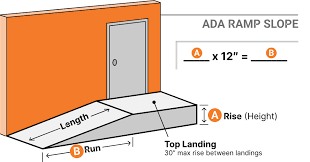Introduction
Australia’s vehicle registration system requires drivers to follow specific regulations for license plates to ensure compliance and maintain road safety. The australian license plate rules vary slightly between states and territories, making it essential for vehicle owners to familiarize themselves with the regulations that apply in their region. These rules not only cover the format and display of plates but also set guidelines for customization and replacement. This guide offers a beginner’s overview of the most important aspects of Australian license plate regulations.
Standard Format and Design of Australian License Plates
Overview of Plate Formats
Each Australian state and territory has unique formats for their license plates, typically including letters and numbers in combinations. For example, plates in New South Wales (NSW) follow the format “ABC-123,” while Victoria uses “1AB-2CD.” These formats ensure vehicles are easily identifiable, helping law enforcement track and manage vehicle ownership.
State-Specific Designs
- NSW: Yellow with black text (standard design)
- Victoria: White with blue text, often including slogans like “The Education State”
- Queensland: Maroon and white with the option to display “Sunshine State”
Different jurisdictions may also offer multiple design choices for personalized or commercial plates.
Legal Requirements for Display
Proper Positioning
According to Australian road regulations, license plates must be affixed to both the front and rear of the vehicle, unless the vehicle type (such as motorcycles or trailers) is only required to display a rear plate. Plates should be securely mounted and visible at all times, with no obstruction from covers, dirt, or frames.
Readability Standards
License plates must be clearly legible from a distance, particularly under different lighting conditions. The regulations mandate that plates should not be faded, damaged, or obscured by any material. This ensures that enforcement cameras and officers can easily read the registration numbers.
Personalized License Plates: Rules and Restrictions
Availability and Approval
Most Australian states allow vehicle owners to purchase personalized plates. These plates enable drivers to choose a unique combination of letters and numbers. However, the chosen text must adhere to guidelines prohibiting offensive language or misleading messages. In Victoria and NSW, for example, authorities reserve the right to reject applications that include inappropriate content.
Display Regulations for Customized Plates
While personalized plates are popular, they must still conform to the size, format, and material standards of regular license plates. Failure to meet these standards can result in fines and penalties.
Replacement and Renewal of Plates
Reporting Lost or Stolen Plates
If a license plate is lost, damaged, or stolen, it must be reported immediately to the relevant transport authority and the police. Vehicle owners are responsible for requesting a replacement through their local department of transport. Replacement fees vary across states, and drivers are usually required to provide identification and vehicle registration documents.
Plate Expiry and Renewal
Some types of plates, particularly custom designs, may have an annual renewal fee. Drivers must ensure their plates remain active to avoid fines or penalties. Standard plates typically remain valid as long as the vehicle’s registration is current.
Fines and Penalties for Non-Compliance
Common Violations
Failure to comply with license plate regulations can result in fines and penalties. The most frequent violations include:
- Obscured plates: Covered or unreadable plates due to dirt or frames
- Misaligned plates: Plates not securely fastened or displayed incorrectly
- Unregistered plates: Using plates that are not linked to a registered vehicle
Legal Implications
Non-compliance may lead to fines ranging from $150 to $500, depending on the severity and jurisdiction. Repeated offenses can result in more severe penalties, including vehicle impoundment.
Conclusion
Navigating Australian license plate rules can seem complicated due to the variations across states and territories. However, by understanding the basic principles governing australian license plate design, display, customization, and renewal, drivers can avoid unnecessary penalties. Following these regulations ensures that your vehicle remains compliant and helps maintain the integrity of the road system. Whether you opt for a standard or personalized plate, staying informed about your obligations will help you enjoy hassle-free driving.
Are you passionate about sharing your insights and expertise? We invite you to write for us! Whether you’re a seasoned writer or just starting out. We’re looking for fresh perspectives on a variety of topics, from lifestyle and wellness to technology and travel.
 Lifeyet News Lifeyet News
Lifeyet News Lifeyet News





